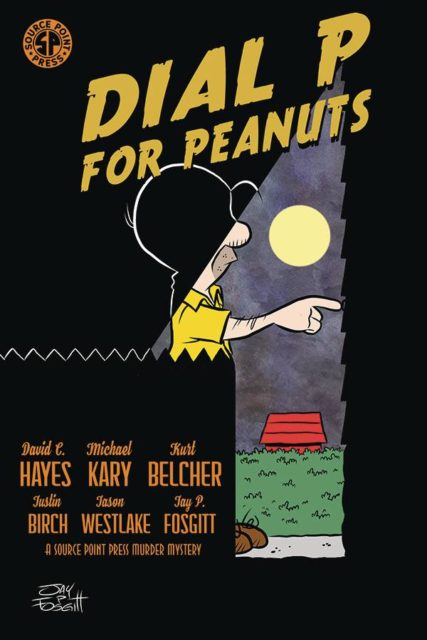Ten childhood friends, now estranged in adulthood, are invited to a weekend retreat on a secluded island. A cryptic poem and a message hint that each of these friends harbor personal and professional secrets and that soon they will each die in an elaborate revenge plot. These friends — these peanuts — may not make it through the night alive, and before the end their secrets will be laid bare.

Those friends?
Penn, the stinky kid, now the perfume model.
Frank, their one black friend as a child, now a candidate for Senator.
Marci, the brainy one, now a distinguished FBI agent.
Patty, the sporty one, now a women’s rights activist.
Shredder, once a piano prodigy, now a guitar god rockstar.
Sally, the youngest one, now a gold-digging serial widow.
Lucille, the bossy one, now a respected psychiatrist.
Charles, the cheerful one who held the gang together, now an environmental lawyer.
A red-haired woman with her face obscured.
And is there another?
Charles Schulz’s Peanuts meets Agatha Christie’s And Then There Were None in David C. Hayes, Michael Kary, and Kurt Blecher’s Dial P For Peanuts, a graphic novel from Source Point Press adapted from the play by Hayes and Kary.
Dial P for Peanuts belongs to that interesting genre of post-Peanuts fiction, which imagines the characters of Schulz’s comic strip in their teenage years or adulthood. The most famous example may be Bert Royal’s play Dog Sees God or Jason Yungbluth’s Weapon Brown, and I’ve long admired John Aegard’s Lovecraft pastiche, “The Great Old Pumpkin.” I may even have written something in that vein myself, though it’s so allusive no one’s ever picked up on it that I know of.
The difference with Dial P for Peanuts is that it doesn’t even try to hide what it is. The name “Peanuts” is right there in the title, and no effort is made to hide the fact that these are the Peanuts characters; Charles even wears the familiar yellow shirt with the black stripe, and Patty still wears the green shirt. Comics Worth Reading even asked whether this would even be published for that reason. Dog Sees God, at least, renames the characters to give it at least a thin veneer of separation. Dial P for Peanuts drops the characters into an Agatha Christie story and just goes.
And how does that setup work? By and large, it works fine. It’s occasionally squicky, sometimes funny, and the climactic deconstruction of Charlie Brown’s place in the Peanuts firmament is actually insightful. The Peanuts characters were never sweetness and light — far from it, they’re all a bit cruel to one another, and A Charlie Brown Christmas is a prime example — but the way the narrative twists them, telling us that they’ve each fucked up badly in secret ways, hurting others and themselves, sort of misses the point. The Peanuts characters weren’t cruel because they were bad. They were cruel because they were children. The characters in Dial P for Peanuts grew up, but they never became adults. It was as though their personalities became frozen in amber. In that sense, I was left feeling a little dissatisfied. I would have liked a story that actually dealt with the Peanuts characters as adults.
Karl Belcher’s artwork doesn’t attempt a Schulz pastiche. (While adults didn’t appear in Peanuts, Schulz drew adult characters in some of his other work, like Youth, so there’s a model that could have been drawn upon.) Instead, I was reminded of Kyle Baker’s work on the graphic novel adaptation of Warren Beatty’s Dick Tracy thirty years ago. It even adopts a kind of comic strip pacing; each page is a six-panel grid.
All in all, Dial P for Peanuts is an odd, if interesting piece of Peanuts ephemera. I enjoyed it as I read it, but I’m not sure if I’ll revisit it any time soon.